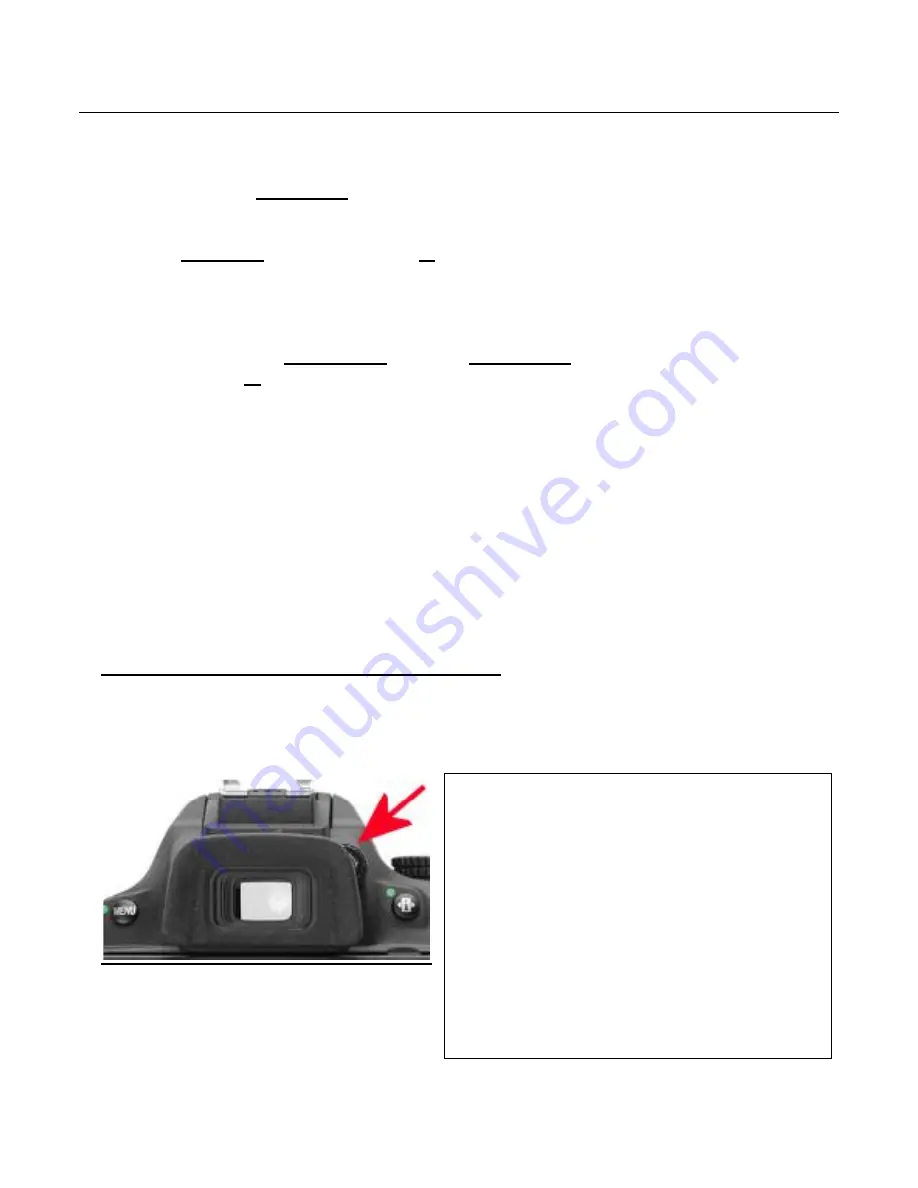
Quick Setup Guide for MEC-5-FSL D3200-N85 Miles Eye Camera
7
Getting Correct Focus
Using Fixed Focus (Recommended)
1.
For best results, use
Fixed Focus
mode, which is where the lens is set to its miminum (closest) focus,
and the whole camera-lens is moved closer or further from the iris until proper focus is viewed in the
viewfinder.
2.
For using
fixed focus
, the lens is set to the
M
setting and the lens focus is dialed to a
minimum focus
(rotate focus ring all the way to 1:1, the opposite end from the “infinity” symbol), which is about 0.286
meters or 11.25 inches (as measured from the subject to the image sensor plane).
3.
Hold the camera up to the client’s eye, and while viewing through the viewfinder, move closer or
further from the eye until the image is sharply in focus, then take the picture.
4.
It is also possible to use
manual focus
.
For using
manual focus
, the
lens switch
is changed from the
M/A setting to the
M
setting. The focusing is accomplished by rotating the focus ring of the lens until
the iris is in focus as viewed through the viewfinder. The downside to this method is that the images
will not all be at the same magnification.
Using Auto-Focus (for the Advanced User)
5.
This camera-lens-illuminator can also be used for autofocus photography of the iris, however the
autofocus is not as reliable as your own focusing. Use of Auto-Focus works fairly well with the blue
iris but often does not work with the brown iris.
6.
Using Auto-Focus effectively requires considerable skill and experience and should be considered only
by the more experienced iris photographer.
For imaging animal iris,
it is usually best to use autofocus, and an aperture in the range of f/32 to f/45.
Setting the Viewfinder Focus (very important for all users)
9.
IMPORTANT: Adjust the Eyepiece Dioptric setting
.
(Initial Setup Only)
This is a small rotary
switch to the right of the viewfinder that can go up or down through several positions, and is designed
to match the viewfinder optics to your vision. When this is set: if you see the subject in focus, the
camera sees it in focus. If you normally wear corrective lenses, always wear them when taking a
picture. To make this adjustment for your eye:
How to Set Eyepiece Focus
1.
Move the rotary switch to one end of the range (all the way up
or down).
2.
Look through the viewfinder at a bright surface (such as a
white wall) that is in the distance (this white surface should
appear blurry).
3.
While viewing through the viewfinder, move the switch up
and down through the range of positions until you can
see the
black brackets ( [ ] ) in the viewfinder
with
maximum
clarity
and
focus
.
4.
Note the optimal position of this switch for your vision, and
always use this setting
. Once you set it for your eye’s vision,
you do not need to change it. If someone else uses the camera,
they need to find the correct setting for their vision (and when
you resume using the camera, you need to return this switch
to the setting you found for your vision).








